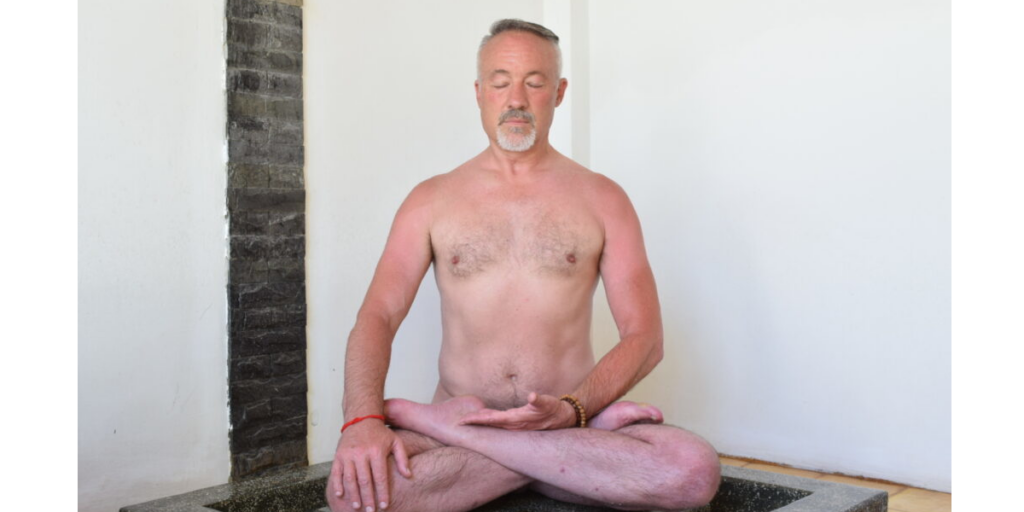A Short History of Yoga

The beginnings
We might already have an idea of what Yoga is but to understand it better, we have to know what it has become as well as its roots and beginnings. A quick look at the history of Yoga will help us appreciate its rich tradition and who knows, it might help us incorporate Yoga into our lives.
Although Yoga is said to be as old as civilization, there is no physical evidence to support this claim. Earliest archaeological evidence of Yoga’s existence could be found in stone seals which depict figures of Yoga Poses. The stone seals place Yoga’s existence around 3000 B.C.
Scholars, however, have a reason to believe that Yoga existed long before that and traced its beginnings in Stone Age Shamanism. Both Shamanism and Yoga have similar characteristics particularly in their efforts to improve the human condition at that time. Also, they aim to heal community members and the practitioners act as religious mediators. Though we know Yoga as focusing more on the self, it started out as community-oriented before it turned inward.
For a better discussion of the history of Yoga, we could divide it into four periods: the Vedic Period, Pre-Classical Period, Classical Period, and Post-Classical Period.
The existence of the Vedas marks this period. The Vedas is the sacred scripture of Brahmanism that is the basis of modern-day Hinduism. It is a collection of hymns which praise a divine power. The Vedas contains the oldest known Yogic teachings and as such, teachings found in the Vedas are called Vedic Yoga. This is characterized by rituals and ceremonies that strive to surpass the limitations of the mind.
During this time, the Vedic people relied on rishis or dedicated Vedic Yogis to teach them how to live in divine harmony. Rishis were also gifted with the ability to see the ultimate reality through their intensive spiritual practice. It was also during this time that Yogis living in seclusion (in forests) were recorded.
The creation of the Upanishads marks the Pre-Classical Yoga. The 200 scriptures of the Upanishads (the conclusion of the revealed literature) describe the inner vision of reality resulting from devotion to Brahman. These explain three subjects: the ultimate reality (Brahman), the transcendental self (atman), and the relationship between the two. The Upanishads further explain the teachings of the Vedas.
Yoga shares some characteristics not only with Hinduism but also with Buddhism that we can trace in its history. During the sixth century B.C., Buddha started teaching Buddhism, which stresses the importance of Meditation and the practice of physical postures. Siddharta Gautama, the first Buddhist to study Yoga, achieved enlightenment at the age of 35.
Later, around 500 B.C., the Bhagavad -Gita or Lord’s Song was created and this is currently the oldest known Yoga scripture. It is devoted entirely to Yoga and has confirmed that it has been an old practice for some time. However, it doesn’t point to a specific time wherein Yoga could have started. The central point to the Gita is that – to be alive means to be active and in order to avoid difficulties in our lives and in others, our actions have to benign and have to exceed our egos.
Just as the Upanishads further the Vedas, the Gita builds on and incorporates the doctrines found in the Upanishads. In the Gita, three facets must be brought together in our lifestyle: Bhakti or loving devotion, Jnana which is knowledge or contemplation, and Karma which is about selfless actions. The Gita then tried to unify Bhakti Yoga, Jnana Yoga, and Karma Yoga and it is because of this that it has gained importance. The Gita was a conversation between Prince Arjuna and God-man Krishna and it basically stresses the importance of opposing evil.
The Classical Period is marked by another creation – the Yoga Sutra. Written by Patanjali around the second century, it was an attempt to define and standardize Classical Yoga. It is composed of 195 aphorisms or sutras (from the Sanskrit word which means thread) that expound upon the Raja Yoga and its underlying principle, Patanjali’s eight-fold path of Yoga (also called Eight Limbs of Classical Yoga). These are:
Yama
Anyone practicing yoga should adhere to the values of non-violence, truth, honesty, celibacy and show restraint.
Niyama
They are observances to be followed by the yoga practitioner like contemplation, contentment, penance and study of scriptures.
Asana
These physical exercises help in concentration of the mind.
Pranayama
It involves breathing exercises that help the aspirant to gain control of prana or life energy.
Pratyahara
It is a stage of sense withdrawal. The aspirant’s mind is focused on the internal object of concentration and has a feeling of detachment from the outside world.
Dharana
In this stage, the aspirant is able to concentrate on one subject or an idea.
Dhyana
It is the stage of steady concentration on one subject or an idea.
Samadhi
This is the stage where the individual consciousness merges with the divine consciousness.
Patanjali believed that each individual is a composite of matter (prakriti) and spirit (purusha). He further believed that the two must be separated in order to cleanse the spirit – a stark contrast to Vedic and Pre-Classical Yoga that signify the union of body and spirit.
Patanjali’s concept was dominant for some centuries that some Yogis focused exclusively on Meditation and neglected their Asanas. It was only later that the belief of the body as a temple was rekindled and attention to the importance of the Asana was revived. This time, Yogis attempted to use Yoga techniques to change the body and make it immortal.
At this point, we see a proliferation of literature as well as the practice of Yoga. Post-classical Yoga differs from the first three since its focus is more on the present. It no longer strives to liberate a person from reality but rather teaches one to accept it and live at the moment.
Yoga was introduced in the West during the early 19th century. It was first studied as part of Eastern Philosophy and began as a movement for health and vegetarianism around the 1930’s. By the 1960’s, there was an influx of Indian teachers who expounded on Yoga. One of them was Maharishi Mahesh, the Yogi who popularized Transcendental Meditation. Another one is a prominent Yoga Guru Swami Sivananda. Sivananda was a doctor in Malaysia and he later opened schools in America and Europe. The most prominent of his works is his modified Five Principles of Yoga which are:
Savasana: or proper relaxation;
Asanas: or proper exercise;
Pranayama: or proper breathing;
Proper diet
Dhyana: or positive thinking and Meditation
Sivananda wrote more than 200 books on Yoga and Philosophy and had many disciples who furthered Yoga. Some of them were Swami Satchitananda who introduced chanting and Yoga to Woodstock; Swami Sivananada Radha who explored the connection between psychology and Yoga, and Yogi Bhajan who started teaching Kundalini Yoga in the 70’s.
Types of Yoga
There are dozens of types of Yoga practiced all around the world and as time goes by more styles are being created to focus on different issues, desires and phases of life. Here I am going to just give you an introduction to the most common forms or styles use here in the United States. Knowing what the basic ideas behind a style is should help you in choosing one that works for you and assist you in finding a class or instructor in your area.
Hatha
Hatha yoga is the most widely practiced type in the U.S. and is excellent for beginners. It is a gentle practice where you move slowly and smoothly through dozens of asanas (poses). The focus is on holding the poses and integrating your breathing into the movement. Hatha is a great way to stretch, work your muscles, get in touch with your body, relax, and decrease stress.
Iyengar
Iyengar yoga, a form of Hatha, uses similar poses but focuses more on body alignment and balance, holding poses longer, and using props such as straps, blankets, and blocks. Like Hatha it’s also a good choice for beginners.
Kundalini
Kundalini yoga emphasizes rapid movement through the poses and emphasizes breathing, chanting, and meditation. It has a more spiritual feel than Hatha and focuses on energy balance in your body. Beginners unfamiliar with Hatha poses, chanting, and meditation, might find Kundalini more physically and mentally challenging then they are comfortable with and might want to start with Hatha.
Bikram
Bikram yoga is practiced in a room heated to about 105 degrees Fahrenheit. The idea is that muscles will loosen and sweating will cleanse the body and remove symptoms of disease and chronic pain. To my knowledge, there hasn’t been any research on the safety or efficacy of Bikram, and so I don’t recommend it because of the potential risk of dehydration, blood pressure changes, and cardiac problems with exertion in such an inhospitable environment. This is particularly so for individuals who may have an existing heart problem or high blood pressure but don’t know it. People who do it swear by it, and so if you are determined to try it, I recommend that you speak with your physician first.
Ashtanga
Ashtanga, or power yoga, is designed to build strength and endurance. It is an aggressive workout where you move quickly from one pose to another. There is little emphasis on meditation with Ashtanga, and at the end of the session you will feel more like you have completed a traditional weight training or callisthenic workout than you would with any other type of yoga. Ashtanga is for you if you’re looking for a tough, physically challenging workout.



